Consulting Services Questionnaire Form

This consulting services questionnaire form can be used by firms offering consulting services. A client can express interest in the firm's services by filling this form. The firm then processes the form data and responds back to the client. The form includes most questions that a prospective client can answer such as contact information, a checklist of services required and also upload a document if required.
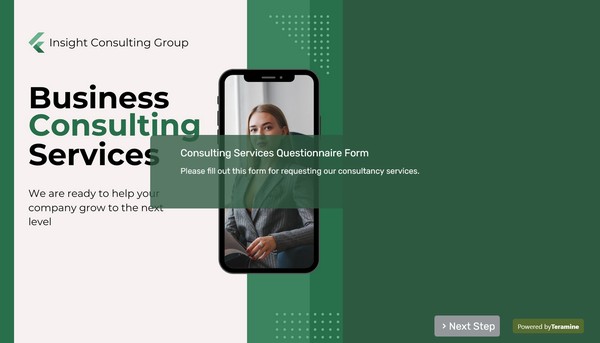
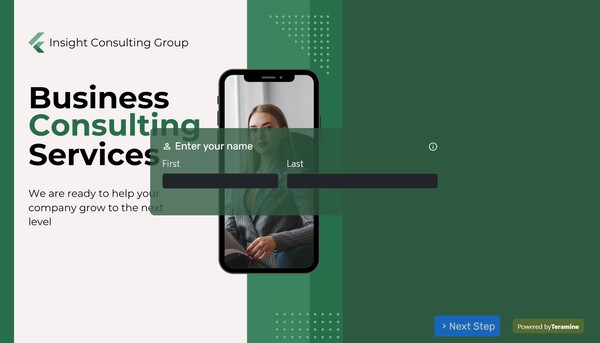
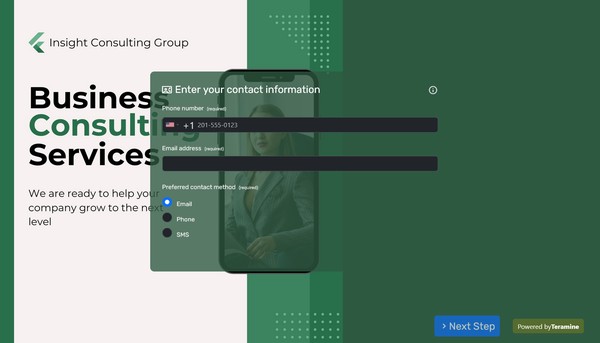
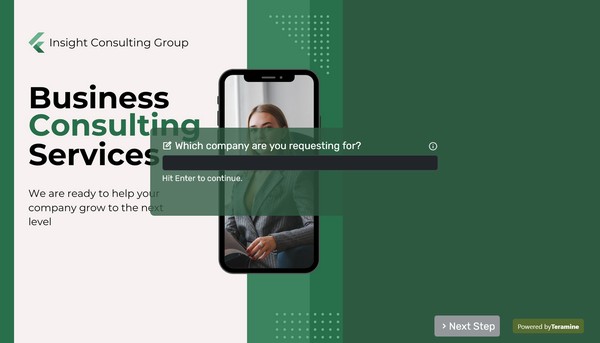
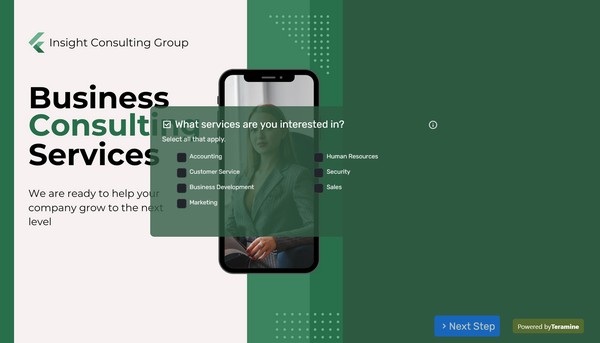
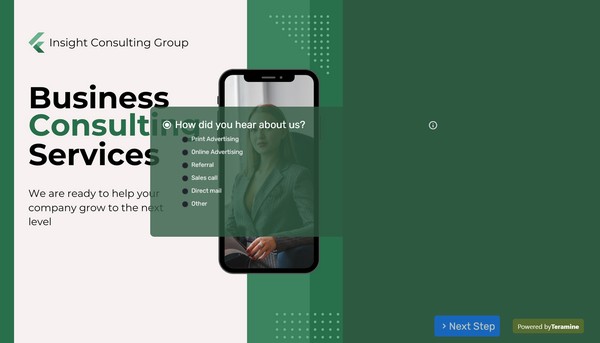
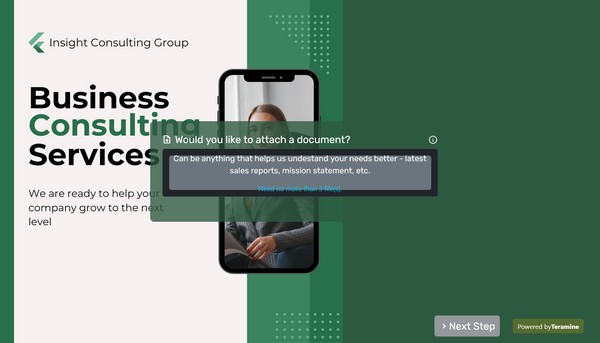
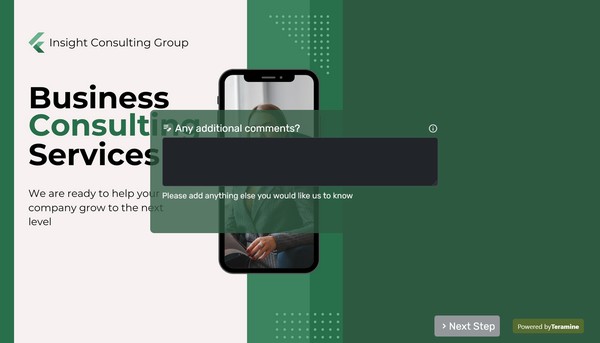

Consulting Services Questionnaire Form FAQs
A Consulting Services Questionnaire Form is a structured document designed to gather essential information from clients seeking consulting services. This form serves as a critical tool in the initial stages of a consulting engagement by enabling consultants to understand the client's needs, challenges, objectives, and expectations. By collecting detailed information on the client's industry, scope of the project, budget constraints, and timelines, consultants can tailor their service offerings and develop customized strategies that align with the client's goals.
Typically, the questionnaire may include fields such as:
- Company Information: Basic details about the client’s business, including name, location, and contact information.
- Project Description: An overview of the specific issues or objectives the client wants to address through consulting services.
- Objectives and Goals: Information on what the client hopes to achieve by engaging consulting services.
- Budget and Resources: Estimated budget and available internal resources that can be allocated to the project.
- Timeframe: Desired completion dates or project milestones.
- Previous Initiatives: Past consulting efforts or internal initiatives related to the current project.
This document not only facilitates a more efficient consultation process by outlining client expectations but also enables consultants to provide more accurate proposals and scopes of work.
Utilizing a Consulting Services Questionnaire Form can offer several strategic advantages for both your organization and potential consultants. Here are key reasons to consider its implementation:
Streamlined Information Gathering: A standardized questionnaire ensures that you collect consistent and comprehensive information from all potential consultants. This facilitates an efficient comparison and evaluation process.
Clarity in Scope and Expectations: By clearly outlining your requirements and expectations in a structured form, you set a clear framework for what you are seeking in consulting services. This minimizes misunderstandings and aligns both parties from the onset.
Objective Decision-Making: With structured responses, you can objectively assess prospective consultants based on the same criteria, enhancing the fairness and transparency of the selection process.
Time Efficiency: By having a predefined form, you save time both in the initial stages of communication and in the evaluative phase, as the information is systematically presented for quick review.
Compliance and Record-Keeping: A completed questionnaire serves as an official document that can be referred to in future interactions or audits, helping maintain clear records of the vetting process.
Enhanced Communication: The form can serve as a conversation starter, identifying areas where a consultant's expertise matches your needs and highlighting areas requiring further discussion.
Customized Insights: Tailoring specific questions to your industry or the challenges you face can yield insights into how a consultant proposes to tackle your unique issues.
Incorporating a Consulting Services Questionnaire Form into your consultant selection process is a strategic move towards optimizing the alignment of expertise with your business needs, ensuring clarity, and enhancing overall efficiency.
A Consulting Services Questionnaire Form is an essential document designed to gather pertinent information from potential or current clients. For it to be effective, it should encompass the following key elements:
Introduction Section:
- Brief introduction explaining the purpose of the questionnaire and its importance.
- Instructions on how to complete the form.
Company Information:
- Company name, address, and contact information.
- Key contact person’s name, title, and contact details.
Background Information:
- Industry or sector in which the company operates.
- Brief company history, mission, and vision.
- Core products or services offered.
Project Information:
- Description of the project or consulting need.
- Objectives of engagement.
- Timeframe and deadlines.
Scope of Work:
- Specific areas where consulting is required.
- Expected deliverables and outcomes.
- Any challenges or pain points currently faced.
Budget and Resources:
- Budget range allocated for consulting services.
- Internal resources or teams available to collaborate.
Previous Consulting Experience:
- Past consulting engagements, if any, and their outcomes.
- Feedback or lessons learned from these engagements.
Expectations and Criteria:
- Goals and metrics for success.
- Criteria for choosing a consulting partner.
- Expectations regarding communication and reporting.
Confidentiality:
- Any confidentiality concerns or agreements that need to be addressed.
Additional Information:
- Open section for any additional comments or specific requirements.
- Any other questions pertinent to the specific consulting service being provided.
Submission Instructions:
- Deadline for submission and instructions on how to submit the completed form.
Contact Information for Queries:
- Contact details for questions regarding the form or the consulting opportunity.
By including these elements, the questionnaire will be comprehensive and facilitate effective communication, ensuring the consulting engagement aligns with the client's needs and goals.
Yes. We take the security of your data very seriously. We have built our application in compliance with the latest security standards. Your data is locked down with access allowed only after strict security checks. In addition, we use the latest SSL encryption standards to protect your data in transit from our servers to your device. You can also protect your forms by using our captcha widgets to prevent spam.'







